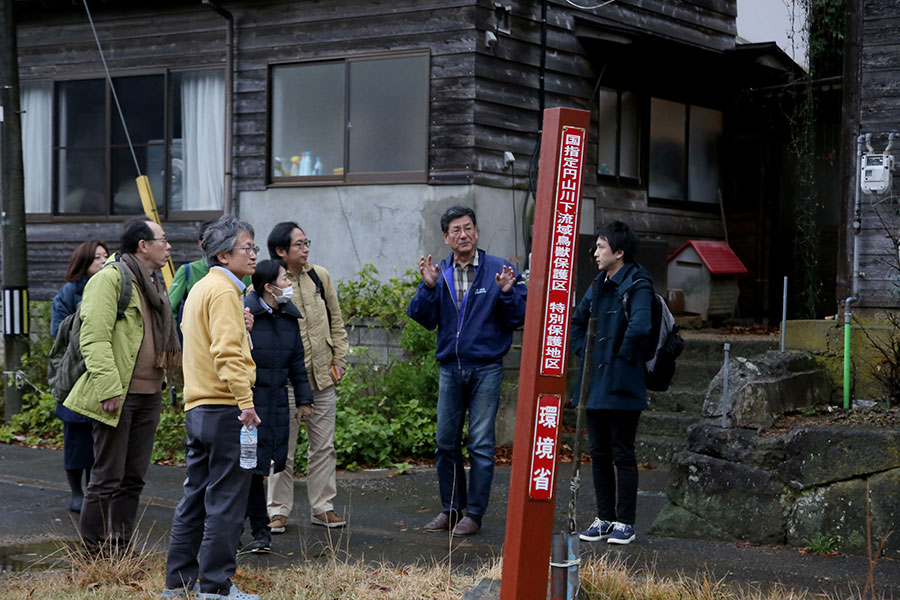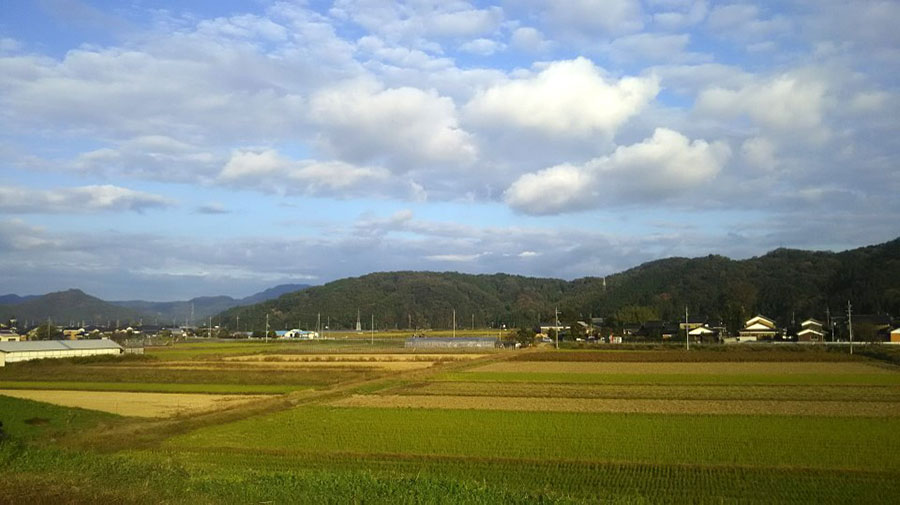The purpose of this study was to collect basic information on the Maruyama River from the following perspectives:
(1) We are trying to understand the role of wetland conservation in water area management based on a case study in Japan
(2) As a survey of the domestic implementation status of the Ramsar Convention, we conducted site visits and interviews regarding the wetland restoration project in the Maruyama River
(3) Understanding the basic facts of stakeholder involvement in the Ramsar registered wetland conservation area, examining if there was any changes in their awareness and implementation before and after registration under the Ramsar Convention.
 We interviewed personnel from the Ministry of the Environment (Takeno Nature Conservation), Stork Symbiosis Division of Toyooka City, NPO Stork Wetland Net (Hachigoro), Toshima Farming Association (who practice stork cultivation in the registered wet area) and Kawanaka architecture (who develop pellets utilizing reeds in the downstream of the Maruyama River).
We interviewed personnel from the Ministry of the Environment (Takeno Nature Conservation), Stork Symbiosis Division of Toyooka City, NPO Stork Wetland Net (Hachigoro), Toshima Farming Association (who practice stork cultivation in the registered wet area) and Kawanaka architecture (who develop pellets utilizing reeds in the downstream of the Maruyama River).
In addition, we visited Kayo Waterfront Park, including both Nenzo wetland and Kayo wetland, which is located in Tai District in Toyooka city, and conducted on-site visits to the treaty registration site and the subsequently expanded area.
In this study, it can be said that wise use under the Ramsar Convention is promoted in the study area. In particular, the practice (for recreation and Eco-DRR) of CEPA (Communication, Education and Public Awareness) was conducted. However, it was also found that misconceptions regarding the Ramsar Convention exist, and practices related to CEPA were insufficient.
At the 13th Conference of the Parties to the Ramsar Convention on October 18, 2018, the existing wetlands of Maruyama River were expanded, and some basins were additionally registered. In this study, including the expanded area, we conducted interviews with stakeholders related to river management for the purpose of understanding the local situation related to river management in the Maruyama River basin, which had been insufficient in the previous year’s survey.
 We conducted interviews with personnel from the Toyooka River National Highway Office of the Ministry of Land, Infrastructure, Transport and Tourism, the Stork Symbiosis Division of Toyooka City, and the Ministry of the Environment (Takeno Conservation Officer). From the perspective of international environmental law, regarding the Ramsar Convention designation standards and management, there is a lack of recognition for maintaining eligibility of the designation standards. Meanwhile, we found that the frequency and content data collection were insufficient regarding the presence or absence of changes in ecological characteristics specified in Article 3.2 of the Ramsar Convention.
We conducted interviews with personnel from the Toyooka River National Highway Office of the Ministry of Land, Infrastructure, Transport and Tourism, the Stork Symbiosis Division of Toyooka City, and the Ministry of the Environment (Takeno Conservation Officer). From the perspective of international environmental law, regarding the Ramsar Convention designation standards and management, there is a lack of recognition for maintaining eligibility of the designation standards. Meanwhile, we found that the frequency and content data collection were insufficient regarding the presence or absence of changes in ecological characteristics specified in Article 3.2 of the Ramsar Convention.
From the perspective of domestic environmental law, interviews focused on the designation of wildlife reserves and specific measures in those reserves. Regarding the designation of wildlife reserves, we found that fish were not included in the protected area plan and there was no specific response to integrated protection management due to the expansion change in 2017. Regarding the specific measures in the reserves, we conducted research on how to deal with damage in abandoned paddy fields.
Regarding the private sector, we interviewed personnel from the local NGO Maruyama River Nahana no kai, Maruyama River Fisheries Cooperative, Kawaya Farming Association, Nakaya Farming Association and the Yuri Farming Association. Specifically, we focused on the interviewees’ concerns and expectations regarding being registered under the Ramsar Convention, the implementation status of environmental education, concerns about being a protected area and their current difficulties. We found that the local NGO Maruyama River Nahana no kai is dealing with garbage problems and are cooperating with the Kinosaki Onsen Association in the downstream castle.
Furthermore, we found that CEPA(Communication, Education and Public Awareness)fails in the fishery association, and it is difficult to control harmful birds. There is also a lack of implementation of CEPA (particularly the Awareness aspect) even in agricultural unions in the expanded area of the registered wetlands.
 We interviewed personnel from the Ministry of the Environment (Takeno Nature Conservation), Stork Symbiosis Division of Toyooka City, NPO Stork Wetland Net (Hachigoro), Toshima Farming Association (who practice stork cultivation in the registered wet area) and Kawanaka architecture (who develop pellets utilizing reeds in the downstream of the Maruyama River).
We interviewed personnel from the Ministry of the Environment (Takeno Nature Conservation), Stork Symbiosis Division of Toyooka City, NPO Stork Wetland Net (Hachigoro), Toshima Farming Association (who practice stork cultivation in the registered wet area) and Kawanaka architecture (who develop pellets utilizing reeds in the downstream of the Maruyama River).
 We conducted interviews with personnel from the Toyooka River National Highway Office of the Ministry of Land, Infrastructure, Transport and Tourism, the Stork Symbiosis Division of Toyooka City, and the Ministry of the Environment (Takeno Conservation Officer). From the perspective of international environmental law, regarding the Ramsar Convention designation standards and management, there is a lack of recognition for maintaining eligibility of the designation standards. Meanwhile, we found that the frequency and content data collection were insufficient regarding the presence or absence of changes in ecological characteristics specified in Article 3.2 of the Ramsar Convention.
We conducted interviews with personnel from the Toyooka River National Highway Office of the Ministry of Land, Infrastructure, Transport and Tourism, the Stork Symbiosis Division of Toyooka City, and the Ministry of the Environment (Takeno Conservation Officer). From the perspective of international environmental law, regarding the Ramsar Convention designation standards and management, there is a lack of recognition for maintaining eligibility of the designation standards. Meanwhile, we found that the frequency and content data collection were insufficient regarding the presence or absence of changes in ecological characteristics specified in Article 3.2 of the Ramsar Convention.